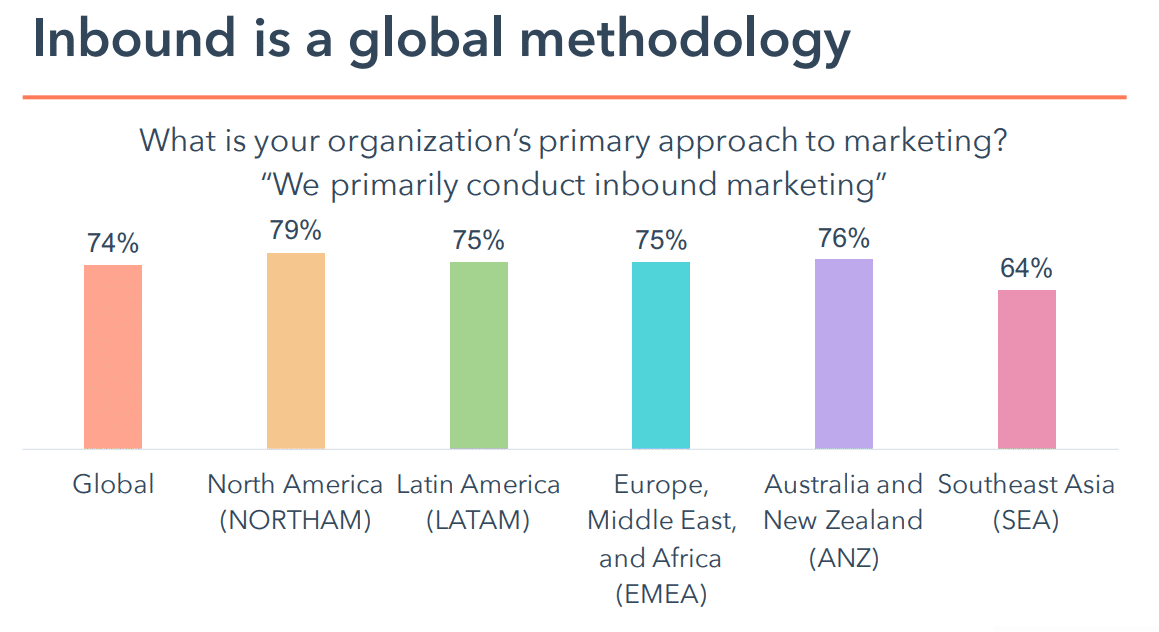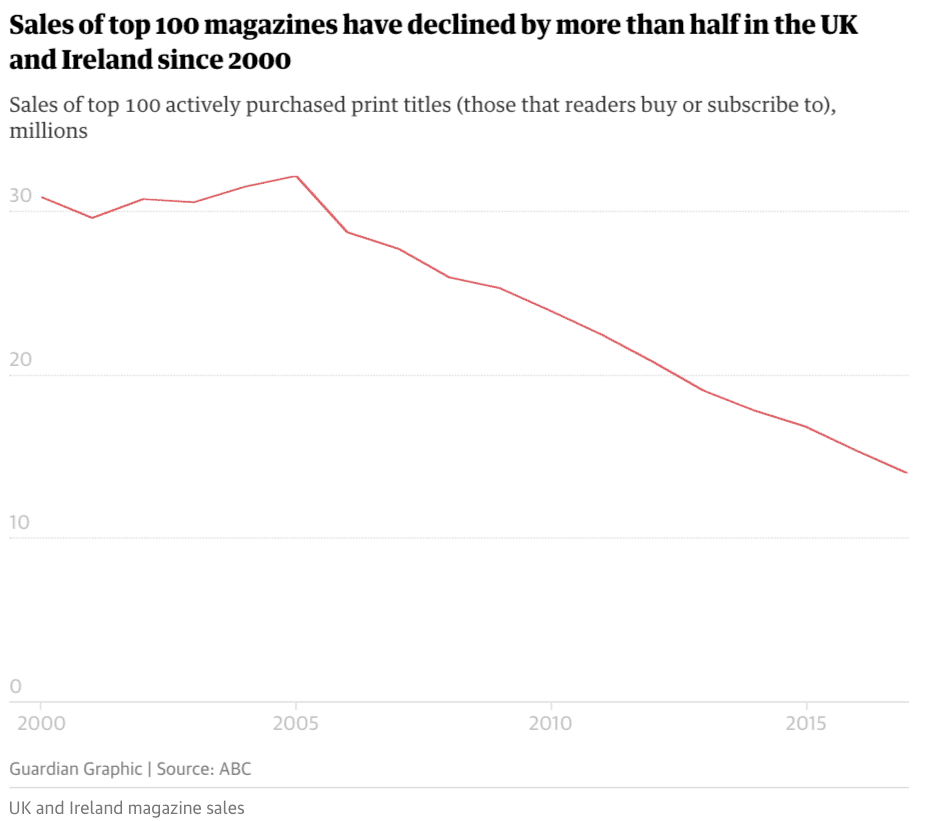Outbound marketing is about reaching “out” to potential customers.
It’s what people think about when they hear the word “marketing” — cold calls, billboards, TV ads, radio ads, flyers, etc. Sounds a bit old-fashioned, doesn’t it?
But these are all ways to let a potential customer know about your product… And they work!
However, outbound marketing is falling out of favor, especially in online marketing circles.
But is this negativity towards it warranted?
Inbound Marketing vs Outbound Marketing
Outbound marketing was pretty much the only way to market your products up until very recently in human history.
Think about a traditional market. Merchants couldn’t just sit there and wait for the customers to come to them. They had to hawk their wares in order to make sales. Moreover, they needed to be louder and more aggressive than their competitors to grab people’s attention.
The invention of mass media, such as newspapers, radio, and television simply meant that instead of merchants fighting for customers in a market you had companies competing for customers in the media through advertising.
But then the Internet changed everything. All of a sudden, consumers could easily educate themselves on any subject, compare various offers, and research their purchases. They didn’t have to blindly rely on the information provided by the companies anymore.
That’s how inbound marketing came to be. When all these potential customers are already looking for whatever it is that you sell, it makes sense to position your business in a way that makes it easy for them to find your product. Now you can let the customers come to you instead of you going to them.
Let’s take a closer look at the differences between inbound marketing and outbound marketing:
Inbound Marketing
Inbound marketing is about pulling in potential customers who know that they have a problem and are actively looking for a solution.
It encompasses things like search engine optimization, building a blog, building an email list, speaking at conferences, and establishing yourself as a thought leader in your space.
The main advantage of inbound marketing is that it’s less expensive. Inbound leads cost 61% less on average than outbound leads. This is not surprising. It’s easier to persuade people who have already expressed an interest in your offer.
However, it’s important to understand that while inbound marketing is cheaper, it’s not free. You have to either produce the content yourself, which takes time, or you have to hire someone to produce it for you, which takes money.
Inbound marketing also requires a lot of upfront work, and it might take a while until you start seeing significant results (think at least 1-2 years of consistent effort if you are starting from scratch).
Moreover, as marketing consultant Mark Schaefer suggested in an article a few years ago, content marketing might not be a sustainable strategy in the long run because of the explosion of free content.
He makes the case that it’s getting harder and harder to get (and keep) people’s attention due to the sheer amount of amazing content out there, which means that there will come a point when producing content will have a negative ROI.
Sure, we are not there yet, but it’s still something to consider.
Outbound Marketing
Outbound marketing is about reaching out to potential customers who might be aware that they have a problem but aren’t actively looking for a solution.
Methods such as handing out flyers, buying newspaper, magazine and TV ads, and advertising on billboards are often criticized for being expensive, casting too wide of a net and lacking a way to determine the ROI.
Moreover, cold calls and cold emails also get a bad rap because they are seen as “salesy” and intrusive. And who wants to deal with that?
However, despite all these flaws, outbound marketing can be very effective when done right and it also allows you to see the results of your efforts immediately instead of having to wait for weeks, months or even years.
You put your offer out there. People either buy or they don’t.
One way or the other, you get an immediate response from the market, and can then adjust accordingly (this is especially valuable when you haven’t validated the product yet).
Outbound marketing, though, is more expensive than Inbound because instead of getting traffic organically, you’re buying it.
It’s also more disruptive. No one appreciates unsolicited sales pitches. Cold calls, cold emails, and ads can be really annoying, especially when you have no interest in the product.
That is why it’s so important to make sure that your offer is relevant to the person you are reaching out to.
Outbound Marketing (Glossary):
Outbound marketing occurs when a company tries to reach consumers through general media advertising (such as TV ads, billboards, newspapers) or through direct and in-person contact (such as meetings, cold calling, and cold emailing).
The most effective outbound marketing tactics are:
- Cold emails and cold calling
- Search Ads
- Trade shows
Outbound Marketing vs Inbound Marketing: Which One Is More Popular?
According to Hubspot State of Inbound 2018 report, companies all over the world prefer inbound marketing.

It makes sense.
Inbound marketing can be extremely powerful when done right. Companies like Buffer had massive success with it. Is it any wonder that everyone else wants their piece of the pie as well?
I’m a huge fan of inbound marketing. However, conversations that are happening on the topic of inbound marketing vs outbound marketing often appear to be biased against the latter.
It seems that quite a few people see inbound marketing as the be-all-end-all and outbound marketing as a relic that belongs in the dustbin of history. But why is that?
Outbound Marketing: Why Does It Get Such A Bad Rep?
The problem is that the discussion about inbound marketing vs. outbound marketing seems to have turned somewhat ideological.
Here’s a graphic that pretty much summarizes the prevalent attitude towards the issue:

Inbound marketing is presented as new and hip, with an emphasis on “earning people’s interest.”
Outbound marketing, on the other hand, is presented as old and stale with an emphasis on “pushing the products or services on customers.”
There appears to be an implication that it’s wrong to present an offer to a potential customer unsolicited. Here it’s not only about the effectiveness, but it’s also about the ethics.
So let’s get this straight. There is absolutely nothing wrong with promoting a product using outbound marketing as long as the product does what you have promised it would do.
Also, let’s not forget what’s important here: marketing strategies should be judged by the results they produce, and outbound marketing methods can work well.
So, don’t discount them just because they aren’t fashionable. You should do what works best for your business.
5 Ways To Use Outbound Marketing To Grow Your Business
Okay, so now that you understand both the advantages and disadvantages of outbound marketing, you might be wondering how exactly can you use it to grow your business.
#1 Cold Emails
A cold email is an unsolicited email sent to a person you haven’t interacted with before.
Reaching out to potential customers via email can be a valid customer acquisition strategy in the early days of a SaaS startup.
For example, Justin McGill, the founder of LeadFuze, used cold emails to get it to $30k MRR (monthly recurring revenue) within 12 months.
Here’s the exact process:
- Find and reach your target customer.
- Craft an outreach plan that is personalized (not the typical marketing message).
- Follow-up
He used his own product to find the email addresses of potential customers which made it easier but it can also be done without it, all it takes is research.
How did Justin craft the initial email? He applied the QVC formula:
- Question. “Try to lead with a question that pertains to their business.”
- Value Prop. “Instead of going on and on about how great your service is and ALL that you offer, try to get the core message out and highlight what makes you unique.”
- Closing Call-to-Action (CTA). “Ask directly if they can speak in the next few days OR give them some sort of closing question that begs an answer in order to elicit some sort of response.
Here is an example of an email that follows the QVC formula:

He also provided the recipients with an option to opt-out of any follow-ups by adding this line at the bottom:
“P.S. If you aren’t the right person to speak about this, let me know. Also, if you’d rather I not follow up with you, you can let me know that too!”
It’s extremely important to keep the email short. “Generally, I recommend three to four sentences (five max)” says Justin.
After that initial email, he followed up by providing value. He advises sending a case study on one of your customers and the results they got.
Justin says that they saw a lot of success with this email sequence:
- QVC Email
- Case Study
- Value Add (recent blog post link, relevant news article, another case study, etc)
- Break-up Email (letting them know you won’t be following up anymore)
He notes that you can automate a lot of it by using tools like Replyify, Outreach, and Quickmail. Or, if you’re a die-hard fan of Gmail, you could give Streak a try, which will help you automate and keep track of all your conversations (this my preferred tool for outreach, btw).
And what to do if you get a positive response? Continues McGill:
“The key here, though, is to not jump the gun and try to convert them to a sale in your follow-up email. You want to ideally get them on the phone once they have expressed interest to increase your chances of a deal.
When they respond with interest in talking to you, reinforce the value proposition and give them a clear call to action to book a time.” explains Justin. He recommends using Calendly for scheduling.
Cold email is probably the most straightforward way to acquire initial customers because you are reaching out directly to people in your target audience and presenting your product to them.
Just don’t be discouraged by the lack of responses. Justin says that only 1% – 10% of the people you reach out to will be interested. It’s a numbers game so you’ll need to send a lot of cold emails to get results.
#2 Cold calls
A cold call is an unsolicited call to a person you haven’t interacted with before.
People tend to avoid cold calls due to fear of rejection. It stings when you make an offer to someone and they say “No”. Moreover, as any salesperson can tell you, a polite “No” is far from the worst answer you can get and no one wants to be berated by a stranger on the other end of the line. So it’s tempting to not make the call at all.
But that might be a mistake. Cold calling, when done right, can be an effective method of generating sales. But how exactly can you do it right?
Chris Orlob and the Gong.io analyzed over 90,000 cold calls using artificial intelligence. What did they discover?
- Use these five tips to craft a great opening: say the prospect’s name (“Hi, John!”), state your full name (“My name is Chris Orlob”), state the name of your company (“I work for Gong.io”), use the pattern interrupt approach with a “How have you been?” question, and state the reason why you are calling (“John, the reason I’m calling is…”).
- Keep discovery questions to a minimum. Don’t try to collect information about the prospect right there on the sales call. Remember, the aim of this call is to set up a meeting, nothing more.
- Try to keep your sales pitch at around 37 seconds. Apparently, on an average cold call, the length of the sales pitch was only 25 seconds, but on successful calls, it was 37 seconds.
Chris also provided some advice for how to make sure that prospects actually show up at the agreed time if you managed to get a meeting.
He suggests scheduling meetings in afternoons and keeping them under one hour.
Chris noted that the best salespeople are more like chess grandmasters than improv comedians. They think things through in advance so that they’d prepared for each call. They follow a specific structure that they know works for them. They are hard to surprise because they anticipate what might go wrong.
Watch Chris’ speech on cold calls if you want to get a more in-depth report on their findings:
#3 Flyers
Everyone that has had the misfortune of handing out some sort of flyers on the street knows that, in general, people aren’t interested in them.
And we have all been on the other side of this interaction. You are going about your day, minding your own business, and suddenly a stranger shoves a piece of paper in your hand.
Now, you are a polite person and don’t want to offend them, so you wait until you turn around the corner before you put the flyer in the trash.
That probably makes you skeptical about flyers. And it’s true, handing them out on the street to random people is not exactly the best use of your resources.
However, they might work in places where your target audience hangs out, for example, if you are a tech startup, you can try handing out flyers in tech conferences.
Just keep in mind that a flyer has to provide value. For example, you can offer access to exclusive content, a free month, a 25% discount, etc. Give them a reason to not throw it in the trash.
#4 Printed ads
You have probably heard that the printed media is dying a slow but sure death. It’s true. People simply aren’t buying as many newspapers and magazines as they used to.
In fact, according to The Guardian, sales of the top 100 magazines have declined by more than half since 2000.

However, according to the same article, “niche publications hold on to readership as general titles yield to an onslaught from digital media”. What does that mean to you?
It means that print ads can still be an effective way to reach potential customers if you buy space in niche publications favored by your target audience.
So, for example, if you sell fishing equipment, don’t advertise in a general magazine. Even a men’s magazine might be too generic. Find a publication that specifically caters to fishing enthusiasts. That way you’ll get the most bang for your buck.
Of course, you can’t just throw together a boring ad and expect great results, you need to get creative if you want to catch the reader’s attention.
You can even take it to the next level by making your printed ads interactive.
For example, we have all seen more car ads in magazines than we can count, and by now most of us simply flip through them without even registering what brand of a car it was much less other details.
But take a look at this Peugeot ad:
Yes, they put an airbag in a print ad, really. Now that’s an ad you would remember, right?
Now, you don’t have to go crazy like Peugeot, but you need to ensure that your ad stands out from the countless ads that the reader has seen before. Need inspiration?
Check out Hubspot’s “15 Clever Interactive Print Ad Examples That Can Complement a Digital Campaign”.
It’s also a good idea to have a way to track the ROI of the ad. You see, when someone clicks on, say, a Facebook ad, analytics will tell you where they came from. But you don’t get that with print ads which makes it hard to know how well they are working. So what can you do?
Simple. Make a special offer that will allow you to track which sales came from that ad. For example, you can have a physical coupon that the reader needs to cut out, or a coupon code that they need to enter at checkout, or even a discount to those who show a photo of that ad at the counter. See what works best for your target audience. Don’t fly blind!
#5 Billboard Ads
Advertising on billboards seems so old-fashioned. Who even does that any more? A lot of companies, actually.
However, doing it effectively takes even more creativity than print ads because people are either walking and daydreaming or speeding through in their cars which means that you need to grab their attention and hold it long enough for you to convey your message.
Canva published a great article called “50 brilliant billboard ads that will stop you in your tracks (and what you can learn from them)” where they showcased some brilliant billboard ads.
For example, one has to admit that “Bite” by Ogilvy & Mather Jakarta ad for Formula Toothcare is kind of hard to miss. Pretty cool ad for such a mundane product, right?

Or, take a look at how Fame Adlabs advertised the catastrophe movie “Day After Tomorrow” on a submerged billboard. It has that apocalypse vibe, doesn’t it?

And here’s the billboard ad that Ubi Bene created for Ikea. You look at it… And then you go “Wait, what?”

What do all these ads have in common?
They serve as a pattern interruption and grab your attention immediately. You’d have to be a pretty absent-minded person to walk or drive by these billboards without noticing them. And once you saw these ads you wouldn’t immediately forget them. Maybe you’d even tell your friends about them.
And that is what you should aim for with billboard ads. Make people notice, make people remember, and make people talk.
Summary
Don’t be fooled by the whole “outbound marketing is outdated” thing. That’s just nonsense. Marketing should be measured by the results it gets, not by your prejudice. There’s no doubt that, if done properly and for the right type of customers, outbound marketing methods can be very effective and bring in huge results.
Of course, all of the tactics that fall under the outbound marketing approach aren’t applicable to all types of business. On top of that, it’s fair to say, not all businesses want to invest substantial budgets in outbound or any marketing activities at all.
Inbound marketing proved to be a more cost-effective approach to marketing and growing a business, yet it takes time to see tangible results. Outbound marketing, on the other hand, requires bigger budgets but it enables you to start getting feedback almost immediately and grabbing your customer’s attention in a shorter time span.
And that might be enough to close the deal.


